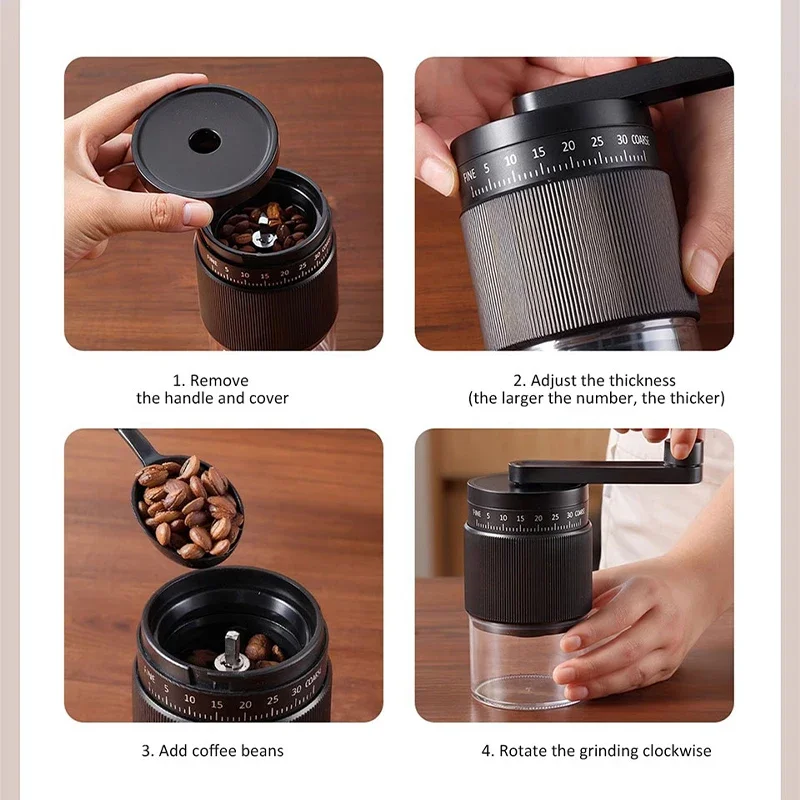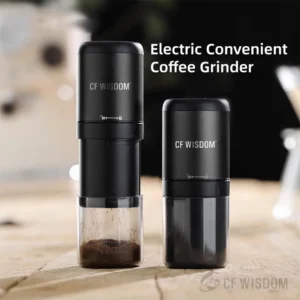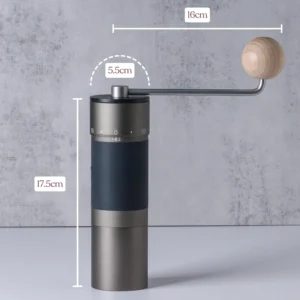Introduction: The Critical Foundation of Exceptional Espresso
When it comes to crafting the perfect espresso shot, no single factor matters more than your coffee grind texture. While quality beans, precision machines, and filtered water all contribute to the final cup, it’s the grind that truly makes or breaks your espresso experience. This seemingly small detail controls how water flows through your coffee, determining whether you’ll enjoy a balanced, flavorful shot or a disappointing, bitter mess.
The relationship between grind texture and extraction is direct and unforgiving. Too fine, and water struggles to pass through, over-extracting bitter compounds. Too coarse, and water rushes through without capturing essential flavors, resulting in sour, weak espresso. Professional baristas understand that precision grind settings are the foundation upon which great espresso is built—a truth that holds whether you’re using a commercial machine or a home setup.
What makes grind texture so critical is that even microscopic adjustments can dramatically transform your results. A quarter-turn on your grinder can be the difference between balanced sweetness and harsh bitterness. Many coffee enthusiasts spend years chasing the perfect grind while overlooking this fundamental principle: extraction balance begins and ends with proper grinding.
Throughout this guide, you’ll learn to visually identify the ideal espresso grind, troubleshoot common texture problems, master adjustment techniques, and understand the science behind why proper grinding matters so much. Let’s discover how this essential skill can elevate your espresso game to professional levels.
The Visual Characteristics of Perfect Espresso Grind
What exactly should the ideal espresso grind look like? Understanding the visual characteristics of properly ground coffee helps establish a reliable baseline for your espresso preparation.
The ideal espresso grind texture most closely resembles fine beach sand—but with greater uniformity. When inspected closely, you’ll notice it has:
- A consistency similar to powdered sugar, though slightly less prone to clumping
- Particles roughly the size of table salt, but more uniform in shape
- A somewhat cohesive quality where grounds stick together slightly when pinched
- An appearance that’s distinctly fine without becoming dusty or powdery
When properly ground, espresso coffee will exhibit some natural clumping. This isn’t a flaw—it’s actually a sign of freshness, as natural oils in the coffee cause particles to stick together. However, excessive clumping can indicate your grind might be too fine.
Light interacts distinctively with properly ground espresso, creating a somewhat matte appearance rather than shiny or glossy. If your grounds look extremely uniform and powdery (like flour), they may be too fine. Conversely, if you can easily distinguish individual particles at a glance, the grind is likely too coarse for proper espresso extraction.
The Tactile Test: How Perfect Espresso Grind Should Feel
Beyond visual assessment, the touch and feel of your coffee grounds provide invaluable feedback about grind quality. The “pinch test” is a simple yet effective method to evaluate your espresso grind texture through tactile feedback.
Here’s how to properly conduct this test:
- Take a small amount of freshly ground coffee (about a quarter teaspoon) between your thumb and forefinger.
- Gently press the grounds together with medium pressure.
- Observe how the grounds behave when pressed and released.
- Pay attention to the sensation against your skin.
The ideal espresso grind should feel slightly gritty but predominantly fine against your fingertips. When pinched, it should hold together momentarily before breaking apart when pressure is released. This cohesive quality indicates the proper fineness needed for espresso extraction without being too powdery.
If the grounds immediately fall apart with no cohesion, your grind is likely too coarse. Conversely, if they clump aggressively and stick to your fingers like clay or dough, the grind is probably too fine. The perfect texture leaves a light residue on your fingertips without feeling dusty or sticky.
This tactile assessment complements visual inspection because it reveals characteristics that eyes alone might miss—particularly the crucial balance between fineness and cohesion that creates proper flow resistance during extraction.
The Science Behind Espresso Grind Texture
Understanding the scientific principles behind grind size helps explain why texture matters so much in espresso preparation. At its core, grinding is about creating optimal surface area for extraction while controlling water flow.
When coffee beans are ground finer, their total surface area increases dramatically. This expanded surface area allows hot water to extract more compounds more quickly from the coffee. For espresso, this rapid extraction is essential due to the brief contact time (ideally 25-30 seconds) between water and coffee. The fine grind enables complete flavor extraction within this narrow window.
Water flow mechanics represent another crucial factor in espresso brewing. The coffee bed must create sufficient resistance to pressurized water (typically 9 bars) to ensure:
- Even saturation of all coffee particles
- Proper contact time between water and coffee
- Complete extraction of desirable compounds
- Limited extraction of bitter elements
Particle size distribution—the consistency of your ground coffee—plays a pivotal role in flavor quality. Even with the correct average grind size, inconsistent particles create extraction problems:
- Larger particles (boulders) remain under-extracted, contributing sour notes
- Smaller particles (fines) become over-extracted, adding bitterness
- Uneven particle size creates channeling, where water finds the path of least resistance
This scientific understanding explains why high-quality grinders produce superior espresso—they create more uniform particles, allowing for even extraction across all coffee grounds and more predictable results.
Diagnosing Espresso Problems Through Grind Analysis
Learning to recognize extraction problems is a crucial skill for improving your espresso. Most common issues can be traced back to improper grind texture, making troubleshooting espresso grind issues an essential diagnostic tool.
Too Fine Grind Signs:
Visual indicators:
– Dark, syrupy shots with minimal flow
– Extraction that begins with long delay (5+ seconds)
– Machine struggling to maintain pressure
– Extremely dark crema with tiger-striping
Taste profile:
– Intense bitterness that lingers on the tongue
– Burnt, ashy flavors dominating the cup
– Hollow mid-palate with missing sweetness
– Dry, astringent mouthfeel
Physical symptoms:
– Machine choking or struggling
– Extraction time exceeding 35 seconds
– Pressure gauge showing higher than normal readings
– Coffee puck remains wet and muddy after brewing
Too Coarse Grind Signs:
Visual indicators:
– Pale, watery shots that flow too quickly
– Thin, dissipating crema with large bubbles
– Blond appearance throughout extraction
– Uneven extraction with visible channeling
Taste profile:
– Sharp sourness or acidity that dominates
– Weak, watery body lacking richness
– Undeveloped flavors lacking complexity
– Absence of pleasant aftertaste
Physical symptoms:
– Extraction time under 20 seconds
– Shots that “gush” rather than flow
– Dry, sandy puck that falls apart easily
– Coffee spraying or channeling during extraction
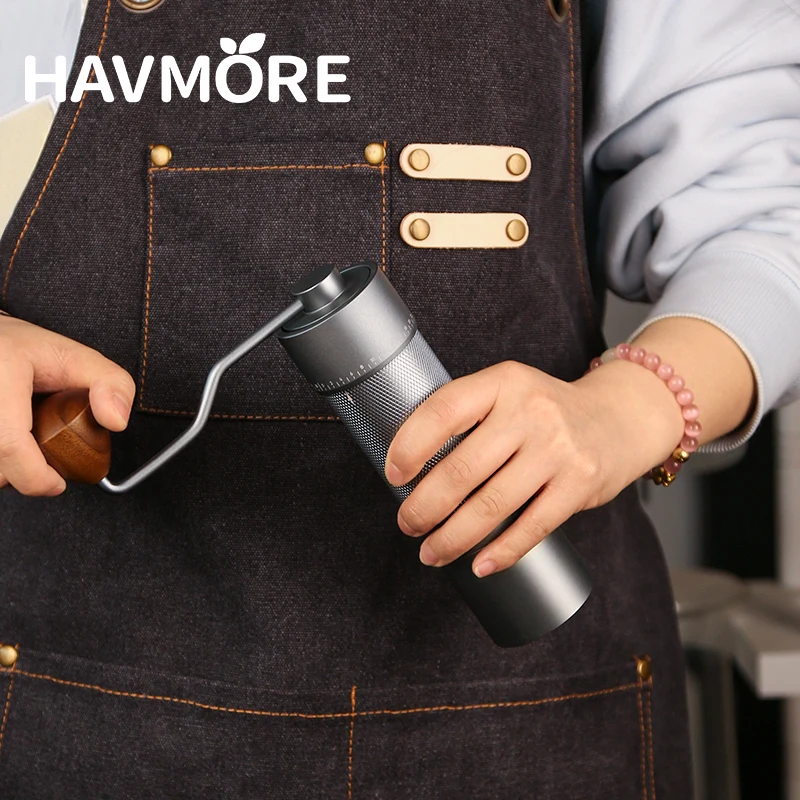
Perfect Grind Indicators:
When your grind is dialed in perfectly, you’ll notice:
– Honey-like flow that starts after 5-7 seconds
– Rich, reddish-brown crema with fine tiger striping
– Balanced flavor with appropriate sweetness and acidity
– Extraction time between 25-30 seconds for a double shot
– Pleasant mouthfeel with satisfying richness
By analyzing these visual and taste indicators, you can systematically adjust your grind to achieve optimal extraction and flavor balance.
Step-by-Step: How to Dial In Your Grinder for Perfect Espresso
Achieving the ideal espresso grind requires a methodical approach to adjusting your grind size. Follow this step-by-step process to systematically dial in your grinder for perfect extraction:
Choose a starting point: Begin with your grinder set to a general “espresso” setting, or if you’re unsure, start slightly coarser than you think necessary (it’s easier to adjust finer than recover from too fine).
Pull a test shot: Prepare your espresso using consistent parameters (18g dose for a double shot is standard) and observe the extraction time and flow characteristics.
Evaluate the results: If extraction is too fast (under 20 seconds), adjust finer. If too slow (over 35 seconds), adjust coarser.
Make micro-adjustments: Change your grinder setting by small increments—just 1-2 “clicks” or a quarter turn for manual grinders. Small changes make significant differences in extraction.
Purge between adjustments: After each grinder adjustment, discard the first 5-10 grams of coffee to clear any remaining grounds from the previous setting.
Time your shot: Aim for 25-30 seconds to extract 25-30ml of espresso from your dose (for a double shot).
Taste and assess: The ultimate test is flavor—balanced espresso should have appropriate sweetness, acidity, and body without dominating bitterness or sourness.
Document your settings: Keep notes on successful grind settings for different coffee beans to build consistency over time.
When troubleshooting, remember:
– If your shot is bitter, harsh, or too slow, adjust your grinder coarser
– If your shot is sour, weak, or too fast, adjust your grinder finer
– Change only one variable at a time to properly identify cause and effect
– Different coffee origins and roast levels require different grind settings
With practice, you’ll develop an intuitive understanding of how minor adjustments affect your extraction and flavor profile, allowing for consistent, delicious espresso.
Grind Consistency: The Most Overlooked Quality Factor
While many coffee enthusiasts focus on grind size, the uniformity of those particles often matters even more. Achieving uniform grind with consistent particle size is perhaps the most overlooked factor in espresso quality.
The problem with inconsistent grinding is the simultaneous creation of “boulders and fines”—coffee particles of wildly different sizes within the same batch. This variation causes major extraction problems:
- Larger particles (boulders) remain under-extracted, contributing sour notes
- Tiny particles (fines) become over-extracted, adding bitterness
- This combination results in espresso that tastes simultaneously bitter and sour
Inconsistent particle size also promotes channeling—water finding paths of least resistance through your coffee puck. When water channels, it flows primarily through certain areas while barely touching others, resulting in uneven extraction and compromised flavor.
The quality of your grinder directly impacts particle consistency. Entry-level grinders typically produce wider particle size distribution, while premium grinders create more uniform results. This difference explains why professional baristas invest heavily in high-quality grinding equipment—consistency yields predictability, which enables repeatability.
Even when using a quality grinder, several factors can compromise consistency:
– Dull or misaligned burrs
– Inconsistent dosing technique
– Static causing particle clumping
– Varying bean hardness or density
By prioritizing grind consistency alongside size, you’ll eliminate a major source of extraction problems and take a significant step toward professional-quality espresso.
Espresso Grind vs. Other Coffee Methods: Comparative Chart
Understanding how espresso grind compares to other brewing methods provides valuable context for properly calibrating your grinder. The differences between espresso and drip grind are substantial and directly related to the extraction method used.
| Brewing Method | Grind Size | Particle Range | Texture Comparison | Contact Time |
|---|---|---|---|---|
| Turkish Coffee | Extremely Fine | 0.1mm | Powdery flour | 3-4 minutes |
| Espresso | Very Fine | 0.2-0.4mm | Fine beach sand | 25-30 seconds |
| Moka Pot | Fine-Medium | 0.4-0.6mm | Table salt | 1-2 minutes |
| AeroPress | Medium-Fine | 0.6-0.8mm | Sugar granules | 1-2 minutes |
| Pour Over/Drip | Medium | 0.8-1.0mm | Regular sand | 2-4 minutes |
| French Press | Coarse | 1.0-1.5mm | Sea salt | 4-5 minutes |
| Cold Brew | Extra Coarse | 1.5-2.0mm | Peppercorns | 12-24 hours |
The relationship between brewing method and grind size follows a fundamental principle: the longer the water-coffee contact time, the coarser the grind should be. Espresso requires a very fine grind precisely because the extraction happens so quickly (under 30 seconds) under pressure.
This comparative understanding helps explain why a grinder that works well for drip coffee might struggle with espresso—the precision demands are significantly higher for espresso preparation, requiring equipment capable of consistently producing the fine, uniform grind essential for balanced extraction.
Choosing the Right Grinder: Essential Equipment for Espresso Perfection
Selecting the appropriate grinder may be the most important equipment decision you make in your espresso journey. While many coffee enthusiasts invest heavily in espresso machines, the grinder’s role in extraction quality often proves even more significant.
Burr Grinder Advantages
Burr grinders crush coffee beans between two abrasive surfaces (burrs), creating consistent particle sizes. These grinders offer several advantages for espresso preparation:
- Conical vs. Flat Burrs: Conical burrs generate less heat and work well for home use, while flat burrs offer superior particle uniformity preferred in commercial settings.
- Material Considerations: Steel burrs are sharper and more durable but generate more heat. Ceramic burrs stay cooler but may be more brittle.
- Adjustment Mechanism: Stepless adjustment allows infinite precision for espresso, while stepped adjusters move in pre-set increments that may be too large for fine-tuning.
Manual vs. Electric Considerations
For espresso preparation, manual grinders with quality burrs often outperform similarly-priced electric models. Premium hand grinders offer:
- Superior burr quality at lower price points
- Precise adjustment capability essential for espresso
- No heat buildup that can affect flavor
- Greater durability with fewer parts to fail
Precision manual grinders designed specifically for espresso feature specialized burr designs and adjustment mechanisms that make them particularly well-suited for creating the consistent, fine grind espresso demands.
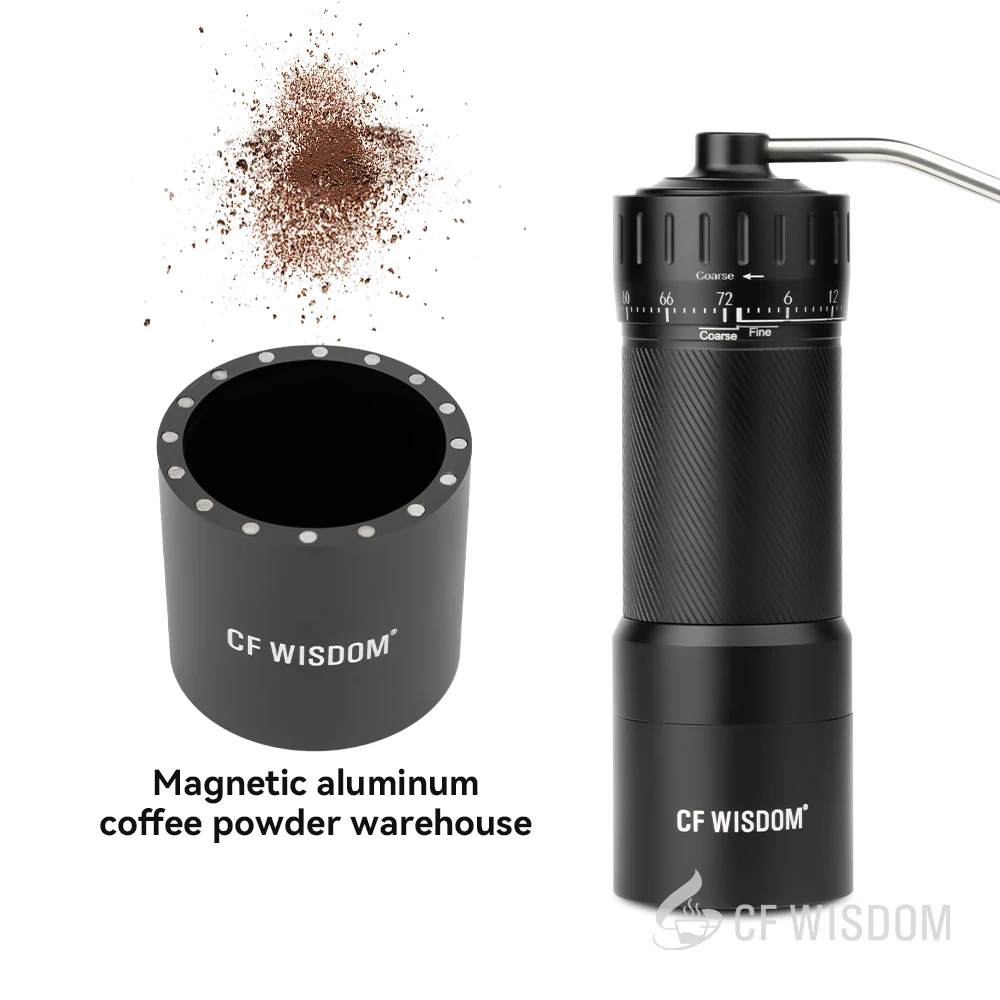
Key Features for Espresso Grinding
When evaluating grinders for espresso preparation, prioritize:
- Fine Adjustment Capability: Look for grinders with fine adjustment mechanisms that allow micro-adjustments
- Burr Quality and Design: Flat burr hand grinders offer excellent particle consistency
- Build Quality: Robust construction minimizes burr wobble and ensures consistency
- Grind Retention: Less retention means fewer stale grounds in your next shot
- Maintenance Access: Easy burr cleaning and alignment adjustment
Specialized manual grinders designed specifically for espresso offer the precision and consistency needed for excellent extraction, often at a better value than comparable electric models.
Fine Adjustment Hand Grinder, Precision Manual Grinder, Travel Coffee Grinder
Price range: $185.11 through $494.63 Select options This product has multiple variants. The options may be chosen on the product pageHand Burr Grinder, Hand Crank Coffee Grinder, Manual Espresso Grinder, Portable Coffee Grinder
Price range: $262.72 through $300.22 Select options This product has multiple variants. The options may be chosen on the product pageHand Burr Grinder, Manual Coffee Grinder Stainless Steel, Precision Manual Grinder
Price range: $183.64 through $187.52 Select options This product has multiple variants. The options may be chosen on the product pageManual Coffee Grinder Stainless Steel, Manual Espresso Grinder, Travel Coffee Grinder
Price range: $276.22 through $276.39 Select options This product has multiple variants. The options may be chosen on the product pageHand Crank Coffee Grinder, Manual Coffee Grinder for Espresso, Manual Coffee Grinder Stainless Steel
$349.15 Select options This product has multiple variants. The options may be chosen on the product page
Regular maintenance of your grinder ensures consistent performance:
– Clean burrs regularly to remove coffee oils and particles
– Check and maintain proper burr alignment
– Replace burrs when they show signs of dulling (typically after 500-1000lbs of coffee)
Beyond Grinding: Other Critical Factors Affecting Your Espresso
While proper grinding forms the foundation of excellent espresso, several complementary factors work alongside grind texture to determine your shot quality.
Dose Precision: Consistent coffee weight ensures repeatable results. Most standard double shots use 18-20g of coffee, measured to 0.1g accuracy. Even slight variations in dose affect extraction parameters and flavor balance.
Distribution Techniques: Even after achieving proper grind texture, how those grounds are distributed in the portafilter significantly impacts extraction. The WDT method (Weiss Distribution Technique) uses a fine tool to break up clumps and evenly distribute grounds before tamping.
Tamping Consistency: Rather than focusing on specific pressure amounts, consistent tamping technique matters most. The goal is creating an even coffee bed without channeling pathways. Level tamping is more important than exact pressure.
Coffee Freshness: Bean age dramatically affects grind requirements. Freshly roasted coffee (within 7-21 days of roast date) behaves differently than older beans. As coffee ages, you’ll typically need to grind finer to maintain proper extraction due to degassing.
Water Quality: Mineral content in your water affects how flavors are extracted. Ideal espresso water contains balanced mineral content that extracts properly without scaling equipment.
Machine Temperature: Thermal stability throughout extraction ensures consistent results. Different roast levels require different grind adjustments, with lighter roasts typically needing finer grinding than dark roasts.
Understanding these interconnected variables helps explain why changing one factor (like grind size) often requires adjusting others to maintain balance. The espresso system functions holistically—each element influencing the others in pursuit of perfect extraction.
Common Questions About Espresso Grinding
Should espresso grind feel powdery?
Good espresso grind should feel fine and somewhat powdery between your fingers, but not as fine as flour or powdered sugar. It should have a slight grittiness while still feeling predominantly fine. If it feels like dust or leaves significant residue on your fingers, it may be too fine.
Is clumping in espresso grind normal?
Yes, some natural clumping is normal and even desirable in properly ground espresso. These clumps in espresso grounds occur because of natural oils and static electricity. However, excessive clumping that forms hard balls can indicate your grind is too fine or your beans might be too oily.
What is channeling and how does grind affect it?
Channeling occurs when pressurized water creates pathways of least resistance through the coffee puck during extraction. This results in over-extraction in some areas and under-extraction in others. Improper grinding—either too fine, too coarse, or inconsistent—is the primary cause of channeling.
What does ‘dialing in’ actually mean?
Dialing in refers to the process of adjusting your grinder and other variables to achieve optimal extraction for a particular coffee. It involves making systematic adjustments to grind size, dose, and sometimes temperature until you achieve the ideal flow rate, extraction time, and flavor balance.
Which coffee origins typically require finer/coarser grinds?
Dense, high-grown coffees from regions like Ethiopia and Kenya often require finer grinding due to their harder bean structure. Lower-density beans from Brazil or Indonesia may need slightly coarser grinding. However, the roast level typically has an even greater impact than origin on grind requirements.
How do pressurized vs. non-pressurized baskets change grind requirements?
Pressurized baskets (with double walls) are more forgiving of grind size and can work with coarser grinds. Non-pressurized baskets require significantly finer and more consistent grinding to create proper flow resistance, but they allow for greater flavor clarity and expression.
Mastering the Art: Why Practice Makes Perfect
Espresso preparation exists at the intersection of science and art. While this guide provides technical understanding of grind texture, developing true expertise requires hands-on practice and sensory development.
The journey to perfect espresso involves building what professionals call “sensory memory”—the ability to recognize subtle differences in extraction quality through sight, smell, and taste. This skill develops gradually through repetition and intentional focus on how grind adjustments affect your results.
A systematic approach accelerates this learning process:
– Keep a simple log of grind settings, extraction times, and tasting notes
– Change only one variable at a time to clearly understand cause and effect
– Build a personal database of settings for different coffees you enjoy
– Accept that each new coffee will require some adjustment
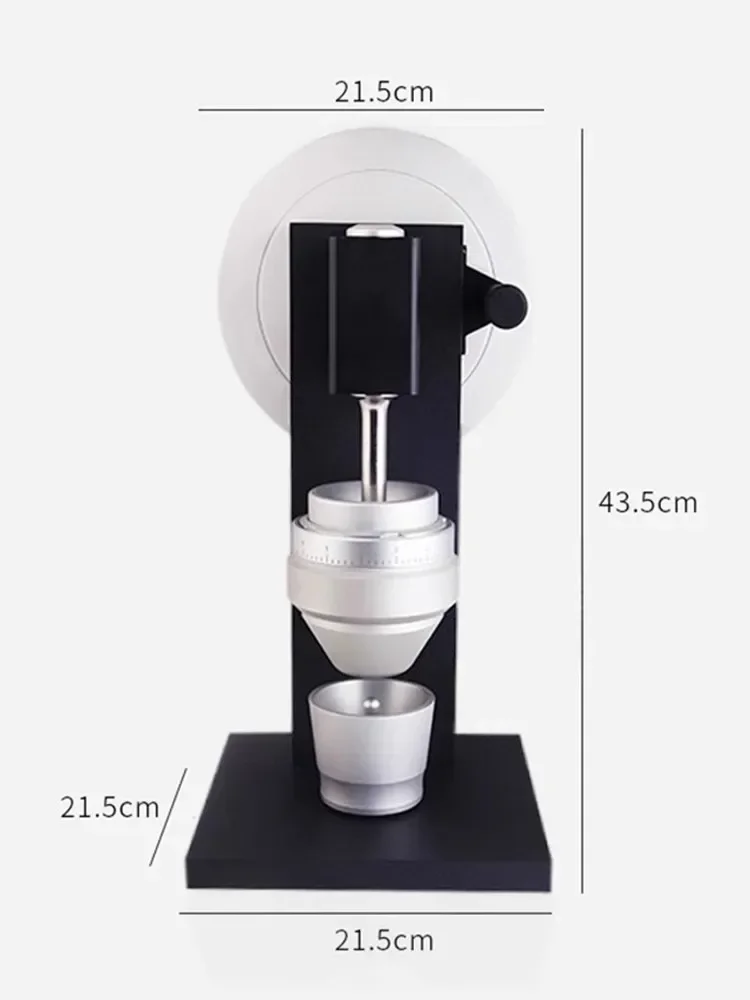
Many coffee professionals spend years refining their understanding of the relationship between grind texture and extraction quality. The good news is that with quality equipment like those offered by Savor Suite, proper technique, and consistent practice, you can achieve professional-level results at home.
Remember that flavor remains the ultimate guide—technical parameters like grind size and extraction time are simply tools to help you achieve delicious espresso. By focusing on how adjustments affect taste while referencing visual and tactile feedback, you’ll develop the skills needed to consistently create perfectly extracted espresso with beautiful texture and appropriate grind size.
The pursuit of perfect espresso grind texture is both challenging and rewarding—a journey that transforms the daily ritual of coffee preparation into an opportunity for continuous improvement and sensory pleasure.

